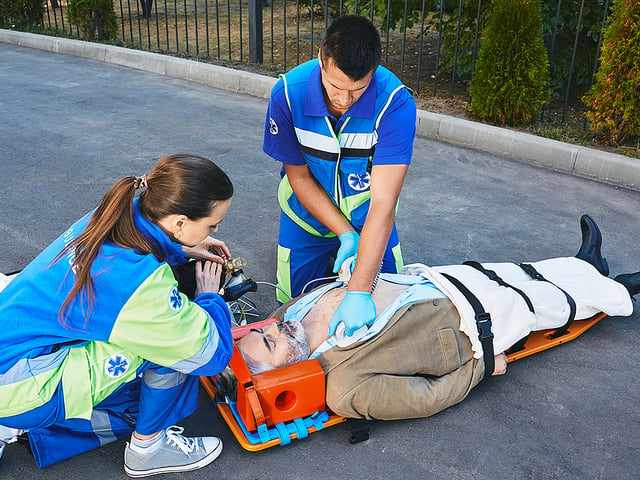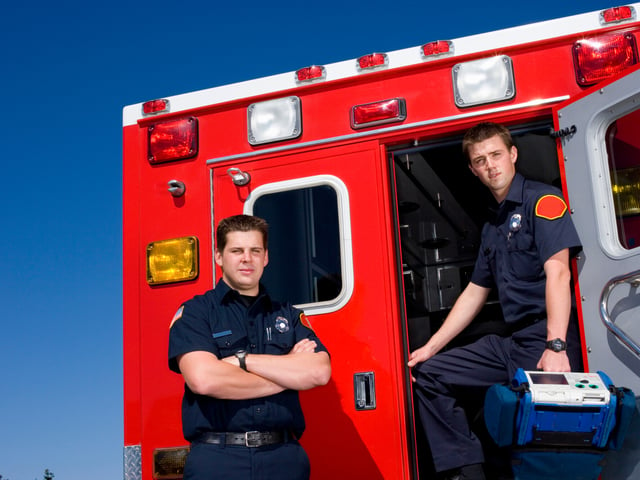
Heart Attack Symptoms: Men vs. Women
Heart disease is the number one killer of both men and women. Women often have different heart attack symptoms than men, but if you know what to look for, it could save your life or the life of someone you love.
This guide will cover how women and men experience heart attacks differently, including what to look for. You may not even know that some of these symptoms are signs of a heart attack, so it’s essential to learn them before it’s too late.
Heart Attack Symptoms in Men
Men typically experience heart attacks differently than women. The most common symptom of a heart attack for men is chest pain or discomfort. This pain can feel like tightness, fullness, or heavy pressure. It can also spread to the shoulders, neck, jaw, or arms.
Other common heart attack signs in men include pain in the jaw, neck, shoulders, arms, or back; nausea or vomiting; Shortness of breath; sweating; light-headedness or dizziness; and fatigue.
In general, men tend to experience more sudden and intense symptoms. Men also typically experience classic heart attack symptoms like jaw pain, chest pain, and left arm pain.
Heart Attack Symptoms in Women
The most common heart attack symptom for women is chest pain or discomfort. This pain can feel like tightness, fullness, or heavy pressure. It can also spread to the shoulders, neck, jaw, or arms, but symptoms tend to be milder, with a slower, more gradual onset.
Women are more likely to experience shortness of breath, nausea, and vomiting than men. Because these symptoms may be less painful and more inconspicuous, they can sometimes be dismissed as indigestion or confused with a less threatening ailment, such as heartburn. There are even more subtle signs that women may experience, such as sleep disturbances, indigestion, and fatigue.
Why Are Heart Attacks More Deadly in Women?
Heart attacks are more deadly in women than men overall because women are less likely to receive immediate treatment for a heart attack. This is most likely because many people do not recognize the symptoms of a heart attack in women. Other reasons heart attacks are more deadly in women include:
-
Women often don’t experience the typical chest pain hallmark of heart attacks. Instead, they may have shortness of breath, nausea, and vomiting symptoms.
-
Women are less likely to call for emergency help when they have a heart attack.
-
Women are more likely to die from heart attacks than men even when receiving the same treatment.
-
Studies have shown that women’s hearts are not as responsive to treatments like angioplasty and stents as men’s hearts are.
What Causes the Difference in Heart Attack Symptoms?
Women’s hearts are generally smaller than men’s, and their arteries are narrower, leading to reduced blood flow and different symptoms.
Hormonal differences between genders also appear to play a role. During pregnancy (when estrogen levels are high), women tend to experience milder symptoms or may not experience any at all. After menopause (when estrogen levels drop), heart attack symptoms in women become more similar to those experienced by men.
Recognizing Heart Attack Symptoms
There are some basic things to look for when determining if someone has a heart attack. First, pay attention to their breathing. If they are gasping for air or short of breath, this could signify that their heart is not getting enough oxygen and is struggling to pump blood.
Look for painful sensations in the chest or upper body, particularly the left arm. This can be a dull ache and numbness or a more sharp, stabbing sensation.
Finally, watch for sweating, nausea, or lightheadedness; these can all be signs that someone is about to pass out from lack of blood flow to the brain.
The best way to prove that someone has a heart attack is to perform an electrocardiogram (ECG) or an echocardiogram. An ECG measures the heart’s electrical activity, and an echocardiogram uses sound waves to create a heart picture.
How to Treat Someone Who Is Having a Heart Attack
Unfortunately, many people do not receive the correct diagnosis or treatment in time, which can be fatal. Early recognition of heart attack symptoms and seeking medical attention immediately is crucial.
If CPR is performed within the first few minutes of a heart attack, odds of survival can double or triple. Your knowledgeable observation and skills can mean all the difference in an individual’s life.
If someone you are with begins displaying symptoms of a heart attack – such as pain in the chest area, difficulty breathing, jaw pain, or arm numbness – begin to administer CPR if you know how to do so.
What Questions Should EMTs Ask About a Heart Attack Patient?
If you or someone you know is having a suspected heart attack, the best course of action is to call 9-1-1. Emergency Medical Technicians (EMTs) will likely be the first medical professionals on the scene, and they will ask a heart attack patient a series of questions to provide the best possible care.
Some of the questions that EMTs will ask include:
-
When did the symptoms start?
-
What medications does the patient take?
-
Does the patient have a history of heart disease?
-
Do the symptoms seem to be getting worse?
-
What, if anything, seems to relieve the symptoms?
EMTs should also examine the patient’s current vital signs, such as heart rate, blood pressure, and respiratory rate. These numbers can give the EMTs a better understanding of how well the heart functions and how much oxygen is getting to the brain.
Preventing Heart Attacks: What Patients Can Control
There are many risk factors for heart attacks, some of which you can control, some of which you cannot. Some controllable risk factors for heart attacks include:
-
High blood pressure
-
Smoking
-
Obesity
-
Uncontrolled diabetes
-
High cholesterol
-
Sedentary lifestyle
You can improve your odds by managing these controllable risk factors through lifestyle changes and, if necessary, medication. Although you can’t control all of the risk factors for heart attacks, there are some things you can do to lower your risk. You can control some of the risk factors by:
-
Eating a heart-healthy diet
-
Exercising regularly
-
Maintaining a healthy weight
-
Not smoking
-
Managing stress
-
Limiting alcohol intake
If you have heart disease, medications and medical procedures can also help lower your risk of a heart attack.
Heart Attack Risk: What Patients Cannot Control
Unfortunately, some of us are at a higher risk for heart attacks due to factors we cannot control. Those genetically predisposed to heart disease or who fall into a high-risk category can take steps to prevent a heart attack, but it is essential to be aware of the increased risk.
Some uncontrollable risk factors for heart attacks include:
-
Family history of heart disease
-
Gender (men are at higher risk than women)
-
Race (African Americans, Hispanics, and Native Americans are at higher risk)
-
Increasing age (45 for men, 55 for women)
-
Previous heart attack or heart surgery
-
Diabetes
-
Sleep apnea
-
Autoimmune disorders
-
Peripheral artery disease
Know the Signs of a Heart Attack
Recognizing the differences in heart attack symptoms in both men and women is crucial. Take note of the more subtle signs that might arise in women, and don’t hesitate to call for medical help if you experience any of the symptoms on this list.
Keep Reading

Emergency Medical Technician Test Blog
How Many Questions are on the NREMT?
The National Registry of Emergency Medical Technicians (NREMT) exam is …

Emergency Medical Technician Test Blog
How Hard is the EMT Test?
EMTs (Emergency Medical Technicians) are required to have strong medica…

Emergency Medical Technician Test Blog
What Is a Passing Score on the NREMT Exam?
The job outlook for EMTs and paramedics is strong. The Bureau of Labor …